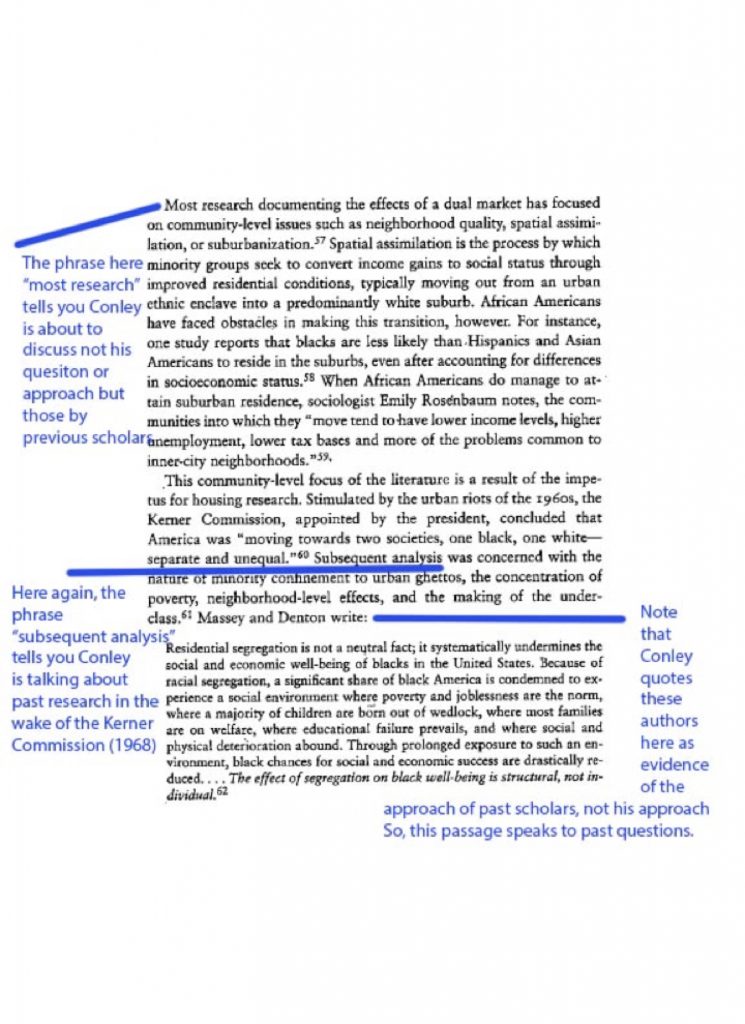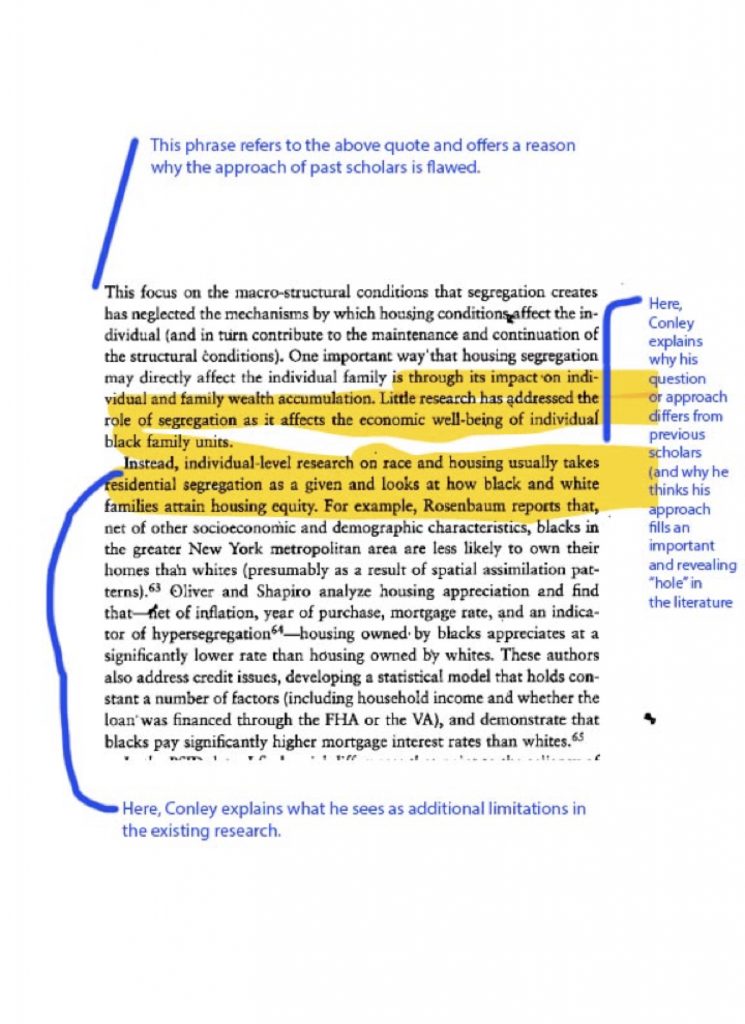In the same way recording an original song or producing an original movie requires knowing what other artists have already done, doing original research requires understanding how your field has already approached your broad topic (see capstone guide for what we mean by “original” research).
In this assignment, you will investigate and write about what questions others have already asked within your broad topic—and the answers they found. For this assignment you will need to identify and write describe five questions (and their answers) that have already been asked about your broad topic.
STEP 1: The Basics of Honors-Level Capstone Research
Read “HOW TO RESEARCH YOUR TOPIC” <<INSERT LINK>> in the capstone research guide and watch the videos embedded into that guide. Watching the videos will teach you research techniques that will save you time.
STEP 2: Where to Find Questions that Have Already Been Asked
When reading a scholarly article, you will usually find a literature review after the introduction (sometimes this literature review will be explicitly labeled and sometimes not). Such literature reviews can be extremely helpful in figuring out both what questions have already been asked as well as what new questions the author plans to answer. Reading a single article carefully, accordingly, can get you two questions!
Let’s look an example. In this excerpt from Dalton Conley’s Being Black, Living in the Red: Race, Wealth, and Social Policy in America (University of California, 2009), Conley both discusses what questions scholars have previously asked about the wealth disparity by race in America and the NEW questions he is asking and why those new questions matter.


STEP 3: Documenting Your Search Approach
In this part of the assignment, you will make clear how you went about finding relevant scholarship in your area(s) of interest. Remember that your capstone is likely an academic project, and all the sources you use to shape your own project should be academic.
This part of your assignment should identify the research databases and portals you use, and explain what you have found to be the most useful or important databases for your discipline or field. If you are staying away from such resources commonly used in your discipline, explain why they are not relevant to your project.
So, first, write a paragraph that explains your choice of both database and search terms. Why did you choose the database(s) your chose given your topic?
Second, document your findings from your database searches using the attached table.
Include a table in this section in which you specify very precisely how you go about your searches for relevant scholarly information. Build this table as follows:
Column A: List search portals you used
Column B: Provide search terms and phrases for each portal, keeping in mind that different search engines will require different search phrases. Be sure to keep in mind the difference between full-text and subject search terms
Column C: Define Boolean limiters and phrases you used so that each term and portal combination identified no more than 50 articles
Column D: List all the articles you retrieved as a result of the search term combination you used at a portal. This list might be a rather long one.
Below is an example of a row from such a table. The portal in question is a database of academic articles available through John Jay Library. Keep in mind that you are looking for academic sources, so not all databases are equally valuable. Some databases, such as EBSCO Complete, will contain both scholarly (peer-reviewed) and non-scholarly sources (e.g., magazines and newspapers). Google will provide plenty of information, but little of it will be academic; Google Scholar, on the other hand, is limited to academic books and articles.
| A. Portal | B. Search Terms and Phrases | C. Boolean Limiters | D. Articles Retrieved |
| Project Muse | anthropology urban New York City Chicago poverty gender |
Poverty AND gender | [Article citation] [Article citation] [Article citation] [Article citation] [Article citation] |
| Anthropology AND urban AND NYC OR Chicago | [Article citation] [Article citation] [Article citation] [Article citation] [Article citation] [Article citation] |
||
| NYC AND poverty AND gender | [Article citation] [Article citation] [Article citation] |
STEP 4: Your Five Questions
Briefly describe each of the questions you identified and the answer specialists in the topic have settled on. Doing so should take about a paragraph for each question (so, five paragraphs total).
The more specific you can be in your paragraph, the better.
Be sure to identify the source you drew upon for your discussion of each question with a brief bibliography. So, if—for example—you learned of Massey and Denton’s analysis of segregation from Conley’s Being Black, Living in the Red (see the example above; Conley quotes Massey and Denton at length in a block quotation), you would want to cite both Conley as well as Massey and Denton.
STEP 5: Documenting Your Sources
Wherever it is in your source that you learn of the question and its answer, take a screen shot (or photo) of the relevant passage (just as there are screenshots from Being Black, Living in the Red—you don’t need, obviously, to annotate the screenshot). (how to take a screenshot: pc ; mac)
Put each of your screenshots in the document you submit. Be sure to put the screenshots in the order that you present the question in Step 4 above.


